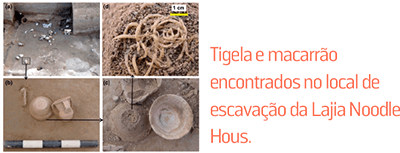ORIGIN OF INDUSTRIALIZED DOUGHS
The consumption of doughs dates back to the feeding history of ancient people. Despite the controversial existing theories, there are many records that reveal that this type of food had been introduced in different regions, by the invaders, travelers, immigrants, among other ways, until it becomes part of the global food culture. With variations in preparation, format, and accompaniments, dough is part of the daily diet of many countries, due to its gastronomic versatility and nutritional value combined with convenience and economy.

Analysis of dogh leftovers found in a clay bowl at the archaeological site of Lajia in Qinghai, China, considering its vegetation composition and biomarkers, provided evidence of the prehistorical production and consumption of noodles-type dough, 4,000 years ago ( LÜ et a.l, 2014).

In the 1st century A.D., the work De re coquinaria, supposedly written by the gastronome Marcus Gavius Apicius, describes (Patina Cotidiana, Book IV, Pandecter) the preparation of a dish with layers intercalated of a mixture of eggs, meat and spices with laganum, which is associated to a traditional lasagna recipe (APICIUS, s.d.).

Francesco Di Marco Da Prato Datini, an Italian trader, wrote about ravioli filled with minced port, eggs, cheese, parsley and sugar in the XIV century (BRITANNICA, 2020).

In the XVIII century, the work Description et détails des arts du meunier, du vermicelier et du boulenger, de Paul-Jacques Malouin (1767) described a very laborious dough manufacturing process and intensive labor (MUUSERS, s.d.).

From 1870 on, Italian immigrants initially established settlements in the South and Southeast of Brazil, and them later in many other states. These immigrants were responsible for introducing the habit of eating dough in the Brazilian food culture (YEARBOOK…, 2019; BUENO, s.d.).




